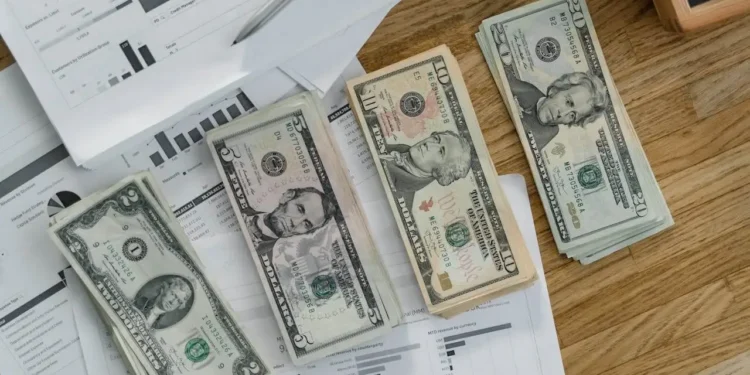Welcome to the world of household debt!
You’re sitting at your kitchen table, surrounded by bills, loan statements, and maybe a stress ball or two.
But before you start hyperventilating into that paper bag, let’s break down what household debt really means and how it affects the average family.
Spoiler alert: You’re not alone in this financial juggling act.

What Exactly is Household Debt?
Simply put, household debt is all the money that all adults in a household owe to creditors. It’s like a big, not-so-fun pie made up of slices of different types of debt.
Let’s cut into this pie and see what we’re dealing with.
The Big Slices: Major Components of Household Debt
1. Mortgage Debt: The Biggest Slice of the Pie
For most households, the mortgage is the 800-pound gorilla of debt. It’s usually the largest debt most families have, but it’s also tied to an asset that (hopefully) appreciates over time.
Average mortgage debt: According to recent data, the average mortgage debt in the U.S. is around $244,498.
2. Student Loan Debt: The Slice That Keeps Growing
Thanks to rising education costs, student loan debt has become a major player in the household debt game.
Average student loan debt: The average borrower owes about $38,000 in student loans.
Think of it as the price tag for that official piece of paper hanging on your wall.
3. Auto Loan Debt: The Slice That Depreciates
Unlike homes, cars typically lose value over time. Yet, auto loans make up a significant portion of many households’ debt.
Average auto loan debt: The average new car loan monthly payment is about $735/mo and the average used car loan monthly payment is about $523/mo.
Remember, that new car smell fades, but the payments stick around for years!
Time for an Auto Loan? Follow These 8 Steps to Save Time and Money
4. Credit Card Debt: The High-Interest Slice
Ah, credit cards. They’re convenient, but they can also be a fast track to high-interest debt if not managed carefully.
Average credit card debt: The average household with credit card debt owes about $7,951.
Pro tip: This is usually the most expensive debt to carry, so it’s smart to pay it off ASAP.
5. Personal Loans: The Miscellaneous Slice
Personal loans can be used for various purposes, from consolidating debt to financing a wedding (or maybe that midlife crisis motorcycle).
Average personal loan debt: The average personal loan balance is around $11,500.
The Smaller Slices: Other Types of Household Debt
While they might not make up the bulk of household debt, these smaller slices can still take a bite out of your budget:
- Medical Debt: Because getting sick in America can be expensive.
- Payday Loans: The slice we hope you never have to taste.
- Home Equity Loans: These are like a second mortgage, but usually smaller.
5 Signs You’re Falling into a Debt Trap & How to Avoid it
How Does This Debt Pie Taste to the Average Household?
According to recent data, the average American household debt is about $104,000. But remember, this is an average – your mileage may vary depending on factors like age, location, and life stage.
Is All Debt Created Equal? The Good, The Bad, and The Ugly
Not all debt is a cause for panic. Let’s break it down:
The Good:
- Mortgage debt: It’s an investment in an asset that typically appreciates.
- Student loan debt: While burdensome, it’s an investment in your earning potential.
The Bad:
- High-interest credit card debt: This can quickly spiral out of control if not managed.
- Auto loans for rapidly depreciating vehicles: That shiny new car might not be worth the long-term debt.
The Ugly:
- Payday loans: With sky-high interest rates, these can trap you in a cycle of debt.
- Anything that pushes your debt-to-income ratio too high: This can hurt your credit score and financial health.
Why Should We Care About Household Debt?
Understanding household debt is crucial because it:
- Affects your credit score
- Impacts your ability to save for the future
- Can influence major life decisions (like when to buy a house or start a family)
- Plays a role in the overall economic health
Strategies for Managing Household Debt
- Prioritize high-interest debt: Usually, this means tackling credit card debt first.
- Consider consolidation: This can simplify payments and potentially lower interest rates.
- Create a budget: Knowing where your money goes is half the battle.
- Build an emergency fund: This can prevent you from taking on more debt when unexpected expenses arise.
- Avoid keeping up with the Joneses: Remember, the Joneses are probably in debt too!
Final Thoughts
Household debt is a reality for most Americans, but it doesn’t have to be a source of constant stress. By understanding how it breaks down and implementing smart strategies to manage it, you can work towards a healthier financial future.
Remember, the goal isn’t necessarily to be completely debt-free (though if that’s your aim, more power to you!). The goal is to manage your debt in a way that allows you to live comfortably, save for the future, and maybe even splurge on a guilt-free latte once in a while.
So, take a deep breath, look at your own debt pie, and start slicing it down to size. Your future self (and your stress ball) will thank you!


















